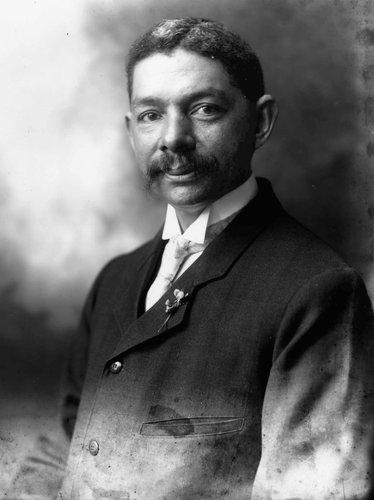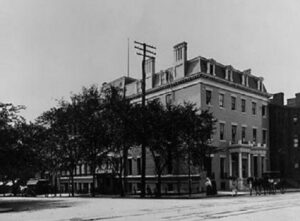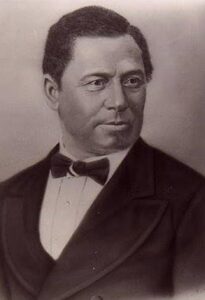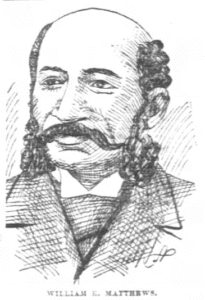Once upon a time in Black Entrepreneur History there was an African American man named Robert Robinson Taylor who was not only the 1st Black student at Massachusetts Institute of Technology (MIT), but he is the 1st accredited Black architect in United States history, responsible for multiple works of architecture in the nation that still stand today.
Born in the southern city and state of Wilmington, North Carolina to an African American father, Henry Taylor, who was an entrepreneur and carpenter, responsible for the building of cargo ships and commercial/residential buildings in Wilmington. His mother’s name was Emily, daughter of freeman.
Robert worked with is father while going to school and after school, he continued to learn the detailed trade of carpentry and building to which led him to want to attend the MIT School of Architecture – the first one in the entire world. He was accepted and enrolled, graduating in 1892.
While at MIT, although there were stereotypes against him and racism because he was Black, he still flourished because being from the south, it was nothing new. As a matter of fact, he was the only Black person at MIT. Surely, there were some who felt he wouldn’t achieve, however, Robert excelled anyway, being above average the whole time at MIT. As a matter of fact, he earned the Loring Scholarship, which was given to a student for exemplary performance, for two straight years while enrolled, and is known as possibly the 1st recipient of the Loring Scholarship ever.
Not only was Robert an outstanding artist, but his penmanship was impeccable along with his ability to design elaborate structures. It was obvious that he took much pride in his work, proven by one glimpse of his architectural drawing of A Soldier’s Home – Pic 1, Pic 2, the title of his thesis. He attended and graduated (1888-1892) – the 1st accredited African American architect in US History.
It was while at MIT he began what would play an intricate role in his future endeavors that have lasted until this very day – his business relationship with the founder of Tuskegee Institute in Alabama, Booker T. Washington – a man who searched out superior Black talent of his day and utilized it toward the building of total independence of Black people, whether formally educated or not.
Taylor accepted the role of curriculum developer and architect for many of the buildings on the campus of Tuskegee Institute such as the enormous and quite breathtaking Tuskegee Chapel which was completed in 1898 by Black students he trained and taught at Tuskegee. The Chapel was huge on the interior with a complete balcony and arched ceilings. The original Chapel built by Taylor was destroyed by fire, and later rebuilt.
Although his passion was to work for himself as an entrepreneur in the industry and not teach, he still found it a great opportunity because it was a mix of teaching others architectural skill by drawings and design while developing at the same time.
He was able to engage in Booker T. Washington’s style of teaching because he was able to watch and teach the students of Tuskegee build his designs. This was the usual practice at the renown African American Tuskegee Institute – a curriculum designed so that students learned everything from the ground up, including how to make their own bricks for construction.
Not only did he design the Chapel but in 1893, he designed the Science Hall at Tuskegee, complete with balconies and arched windows. This building was the first that he built on the grounds. He also built a hospital.
Taylor, during his career, left Tuskegee for a while for entrepreneurial ventures to which he designed other immaculate buildings before returning back to Tuskegee to build even more. Pictures are at the links below:
- Alta Settlement House for immigrants from Italy
- Tuskegee’s Slater-Armstrong Memorial Trades Building
- Tuskegee’s Dorothy Hall
- Carnegie Library
- Wiley College in Texas
- Livingstone College in NC
- The Administration Building at Tuskegee
- Rockefeller Hall at Tuskegee
- Emory’s Dorms at Tuskegee
- Tuskegee’s Douglas Hall
Death
Taylor died at the age of 74 in Tuskegee, Macon County, Alabama in the Chapel he built, but he was buried in the city and state of his birth at Pine Forest Cemetery. He died on December 13, 1942, leaving behind many children and a wife.
During his life, he had become widowed when his first wife Beatrice Francis Alice Taylor passed away in 1906. In October of 1911, he married Nellie Taylor, a music teacher. Robert Taylor had children with both his wives.
Sources
Ancestry.com. U.S., Find A Grave Index, 1600s-Current [database on-line]. Provo, UT, USA: Ancestry.com Operations, Inc., 2012.
Ancestry.com. North Carolina, Marriage Records, 1741-2011 [database on-line]. Provo, UT, USA: Ancestry.com Operations, Inc., 2015.
Ancestry.com. U.S., Find A Grave Index, 1600s-Current [database on-line]. Provo, UT, USA: Ancestry.com Operations, Inc., 2012.
Ancestry.com. U.S., Find A Grave Index, 1600s-Current [database on-line]. Provo, UT, USA: Ancestry.com Operations, Inc., 2012.





More Related Stories
James Wormley – Founder of the Most Expensive Hotel in Washington D.C. in 1800s – the Wormley Hotel
William E. Matthews – Wealthy Financial Broker & Civil Rights Leader of 1800s
Charles Porter Grove – Owner of Montana and Illinois Gold Mining Company & Leader of the “Dreamed” Grove City, Montana